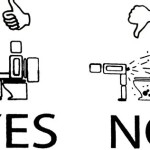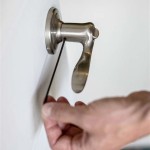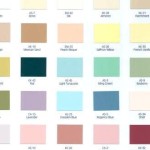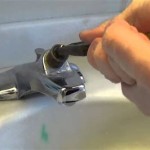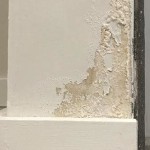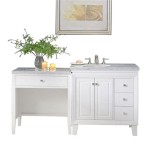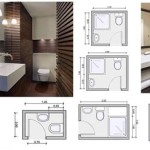How To Get Yellow Stains Off Bathroom Floor
Yellow stains on bathroom floors are a common problem, often caused by mineral deposits, hard water, rust, or even mold and mildew. While these stains can appear unsightly and detract from the cleanliness of your bathroom, they are usually treatable with the right approach. This article will guide you through the process of removing yellow stains from your bathroom floor, providing effective methods tailored to various causes and stain types.
Identifying the Cause of Yellow Stains
Before embarking on any stain removal process, it's essential to identify the underlying cause of the yellowing. This will help you choose the most appropriate cleaning solution and avoid potential damage to your bathroom floor.
Here are some common culprits and their characteristics:
- Mineral Deposits: Hard water often leaves behind mineral deposits that appear as white or yellowish stains. These are usually powdery or crusty and can be found in areas where water tends to pool, like around the shower or bathtub.
- Rust: Rust stains are often reddish-brown, but they can appear yellowish, especially when they are older or less concentrated. These stains are typically caused by iron pipes or metal fixtures in contact with water.
- Mold and Mildew: These microorganisms thrive in damp environments and can produce yellowish stains, particularly in areas with poor ventilation. They often have a musty odor.
Once you've identified the likely source of the yellow stains, you can move on to the appropriate cleaning methods.
Cleaning Yellow Stains From Mineral Deposits
Mineral deposits can often be removed with a combination of household cleaners and a little elbow grease. Here's a step-by-step guide:
- Pre-Clean the Area: Before applying any cleaning agents, sweep or vacuum the floor to remove loose dirt and debris.
- Mix Cleaning Solution: Prepare a cleaning solution by mixing equal parts white vinegar and water in a spray bottle. This solution is effective at dissolving mineral deposits and is generally safe for most bathroom floor materials.
- Apply the Solution: Spray the affected areas with the vinegar solution and allow it to sit for 10-15 minutes.
- Scrub the Stains: Using a scrub brush, gently scrub the stained areas. Pay close attention to areas where the stains are more concentrated. You may need to repeat this process for stubborn stains.
- Rinse and Dry: After scrubbing, rinse the floor thoroughly with clean water and dry it completely. This step is crucial to prevent further mineral build-up.
If the vinegar solution proves ineffective, you can try a commercial descaler specifically designed for mineral deposits. Follow the manufacturer's instructions carefully.
Removing Rust Stains
Rust stains require a slightly different approach. Here's what you can do:
- Prepare a Cleaning Paste: Create a paste by mixing baking soda with a few drops of hydrogen peroxide. The paste should be thick enough to apply to the stains.
- Apply the Paste: Apply the baking soda paste to the rust stains and let it sit for 30 minutes to an hour. You can use a toothbrush or a scrub brush to help the paste adhere to the stains.
- Scrub and Rinse: Gently scrub the paste into the stains, then rinse thoroughly with clean water.
- Repeat If Necessary: If the stains are stubborn, you may need to repeat the process several times. You can also try using a commercial rust remover, but be sure to test it on a small, inconspicuous area first to ensure it does not damage your floor.
Treating Mold and Mildew Stains
Mold and mildew thrive in moist environments, making bathrooms a common breeding ground. Here's how to remove these stains:
- Ventilate the Area: Before beginning cleaning, open windows and doors to improve ventilation and reduce humidity.
- Prepare a Bleach Solution: In a well-ventilated area, mix one part bleach with ten parts water. Use caution when handling bleach, as it can be harmful if not used properly.
- Apply the Solution: Use a spray bottle to apply the bleach solution to the mold and mildew stains. Allow it to sit for 10-15 minutes.
- Scrub and Rinse: Scrub the stains with a brush, then rinse the floor thoroughly with clean water. Ensure that all traces of the bleach solution are gone.
- Dry Completely: Allow the floor to air dry completely. Make sure to remove any excess water to minimize the risk of mold and mildew regrowth.
If mold or mildew continue to be a recurring issue, consider addressing underlying causes like poor ventilation or excessive humidity. A dehumidifier can help to reduce moisture levels in the air and prevent mold growth.

How Do You Remove Yellow Stains From Linoleum Bathroom Floors Hometalk

Is There Any Way To Remove Yellow Staining From Vinyl Bathroom Floor Hometalk

How Do You Clean Yellowed Linoleum Hometalk

Why Are My Shower Tiles Turning Yellow

How To Clean Heavy Staining And Yellowing From Tile Grout Using Simple Solution Express Co

How To Remove Yellow Stains From Floor Tile Ehow

3 Best Ways To Get Rid Of Hard Water Stains From Bathroom Tiles Kent

3 Ways To Remove Stains From Tiles Wikihow

How To Clean Tiles With Stubborn Stains Bathroom Hardone Forums

Ways To Remove Yellow Stains From Linoleum Flooring Free Infographic
Related Posts

